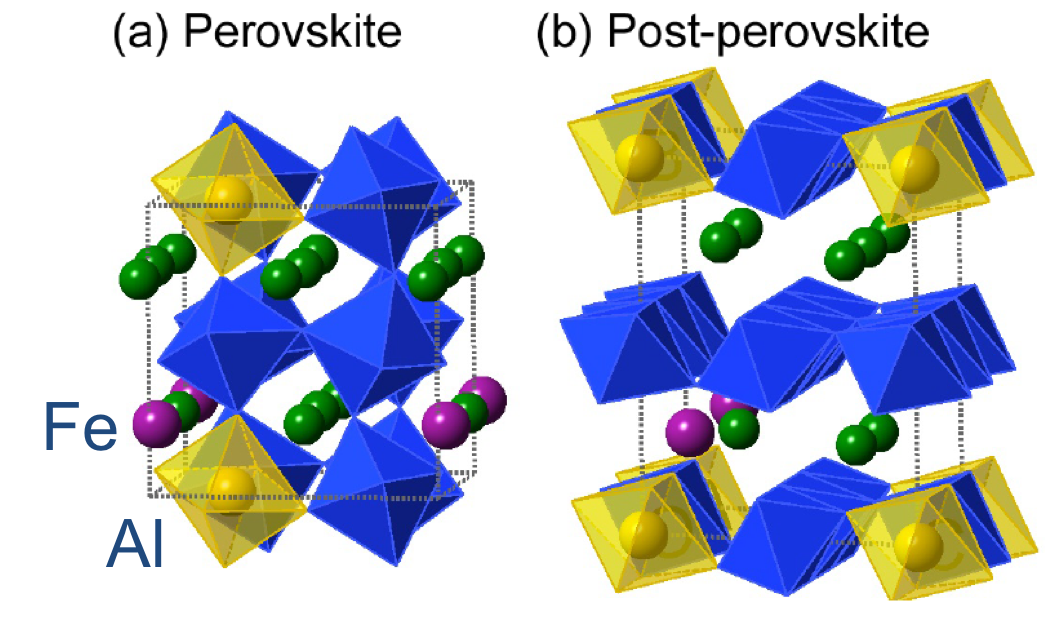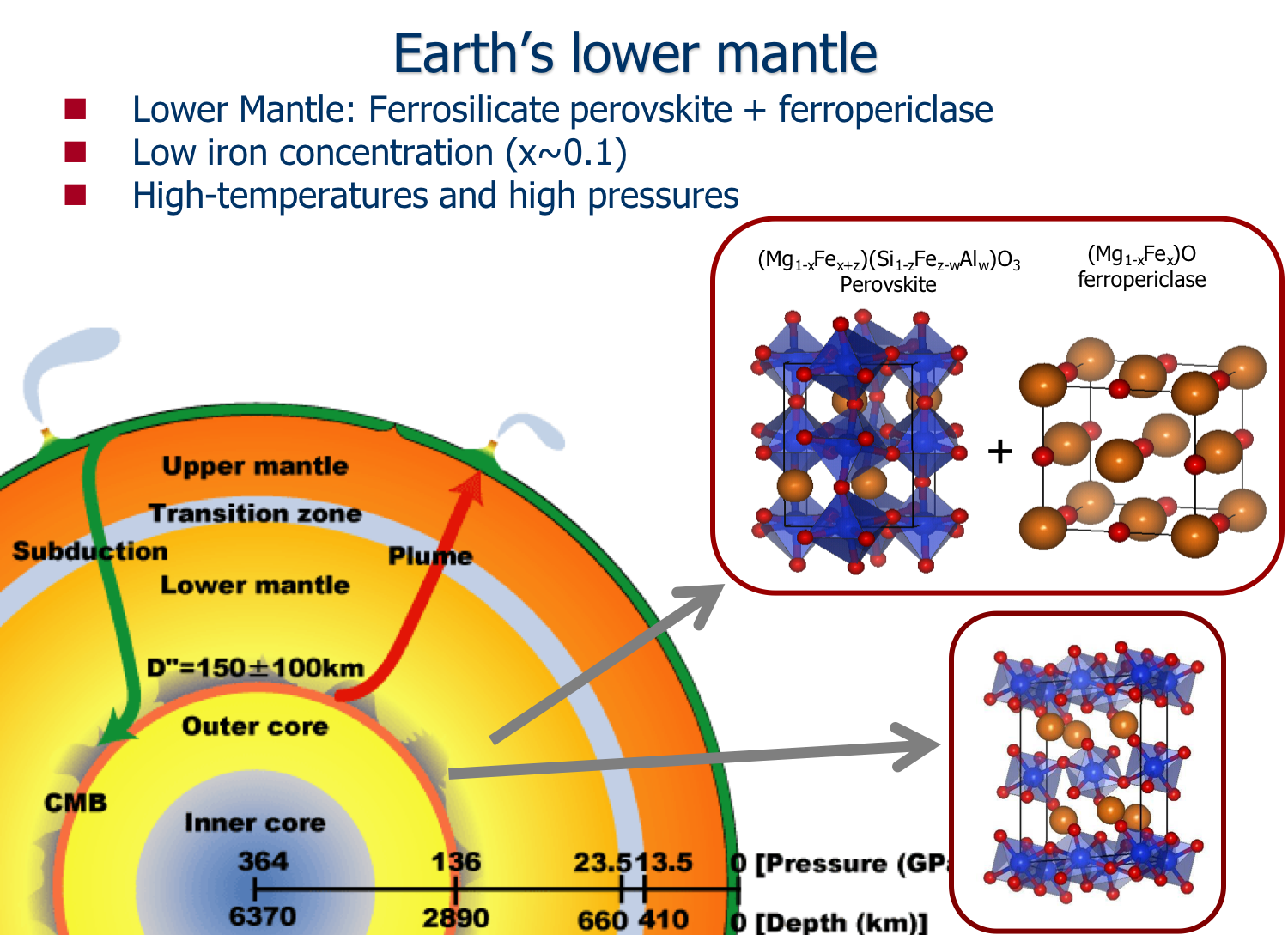
Spin crossover of iron is of central importance in solid Earth geophysics. It impacts all physical properties of minerals that altogether constitute ∼ 95 vol% of the Earth’s lower mantle: ferropericlase [(Mg,Fe)O] and Fe-bearing magnesium silicate (MgSiO3) perovskite.[1]
Using density functional theory+Hubbard U (DFT+U) calculations, we investigate how aluminum affects the spin crossover of iron in MgSiO3 perovskite (Pv) and post-perovskite (Ppv), the major mineral phases in the Earth’s lower mantle. We find that the presence of aluminum does not change the response of iron spin state to pressure: only ferric iron (Fe3+) in the octahedral (B)-site undergoes a crossover from high-spin (HS) to low-spin (LS) state, while Fe3+ in the dodecahedral (A)-site remains in the HS state, same as in Al-free cases. However, aluminum does significantly affect the placement of Fe3+ in these mineral phases. The most stable atomic configuration has all Al3+ in the B-site and all Fe3+ in the A-site (thus in the HS state). Metastable configurations with LS Fe3+ in the B-site can happen only at high pressures and high temperatures. Therefore, experimental observations of LS Fe33+ at high pressures in Al-bearing Pv require diffusion of iron from the A-site to the B-site and should be sensitive to the annealing temperature and schedule. In the Earth’s lower mantle, the elastic anomalies accompanying the B-site HS-LS crossover exhibited in Al-free Pv are likely to be considerably reduced, according to the B-site Fe3+ population.[2]
[1] N. Tosi, D. A. Yuen, N. de Koker, and R. M. Wentzcovitch, Mantle dynamics with pressure- and temperature-dependent thermal expansivity and conductivity, Phys. Earth & Planet. Int. 217, 48–58 (2013). DOI:10.1016/j.pepi.2013.02.004
[2] H. Hsu, Y. Yu, and R. M. Wentzcovitch, Spin crossover in iron in aluminous MgSiO3 persovskite and post-perovskite, Earth & Planet. Sc. Lett. 359-360, 34-39 (2012). DOI: 10.1016/j.epsl.2012.09.029
